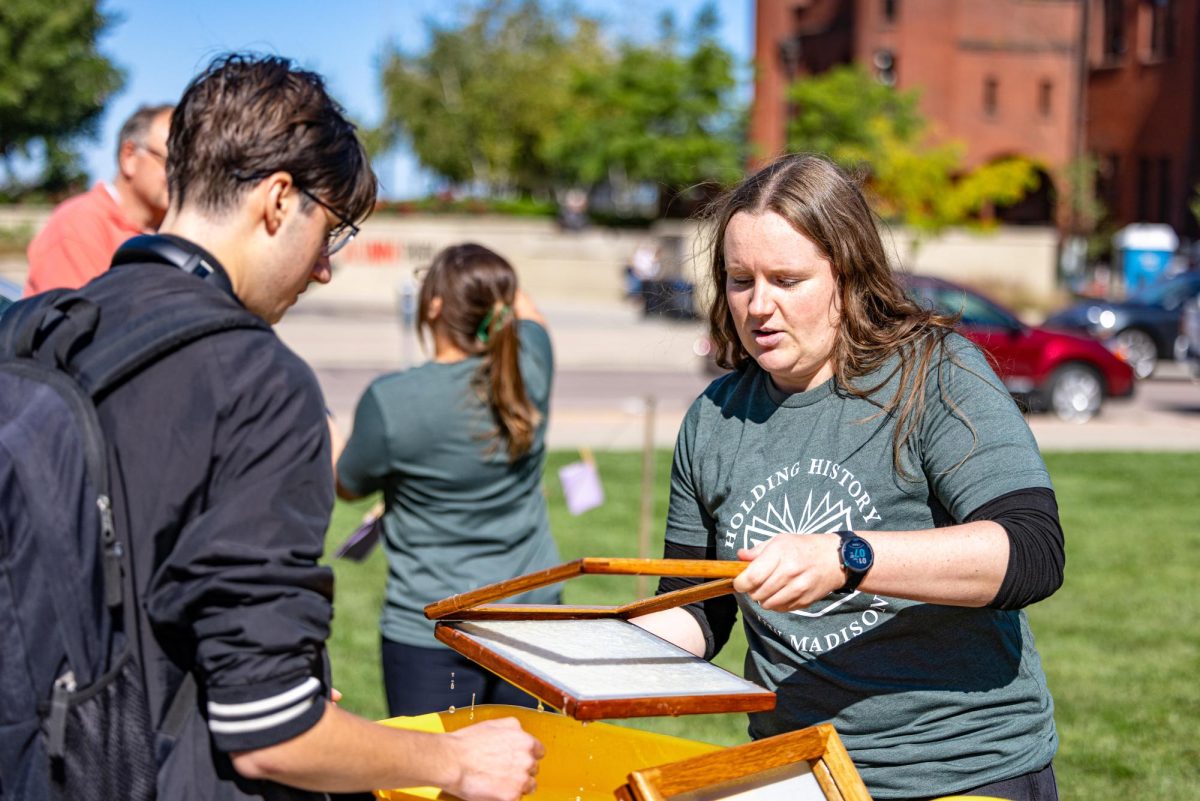Holding History, a University of Wisconsin program focused on the history of media and book arts, hosted a papermaking event today in Library Mall. The event was hosted in collaboration with the Center for Culture, History and Environment and the Nelson Institute for Environmental Studies.
Several tables were set up with buckets of different colored pulp — the raw material used to make paper — mixed with lake water, according to one event organizer.
Participants used a mould and deckle to scoop up pulp in an even sheet, let it drip dry for a minute, flip it onto a cloth on the table and press out the remaining water. Some tables offered flowers and string to press between two sheets of paper for decoration.
Hand papermaking was not widely used in the states until the late 70s, when the Friends of Dard Hunter, now North American Hand Papermakers, was created to revive the practice and equipment, Robert Possehl said.
Making paper by hand is far more environmentally friendly than paper mills, which use harmful chemicals that flow directly into the water supply, Possehl said.
This event preserves tradition through the materials used to create the paper, according to Possehl. Each plant used for papermaking produces a different look and feel, with cotton linens being the most popular material in Western traditions, Possehl said.
The linens used to produce paper are often sourced from old clothes, therefore promoting conservation efforts, Possehl said.
On top of preserving the art of paper making through teaching students and promoting the organization, the event fosters community, according to Possehl.
“We all have a hand in saving hand papermaking as a discipline,” Possehl said.
The papers will be used in an exhibit at the Nelson Institute in the coming months, according to event organizers.



